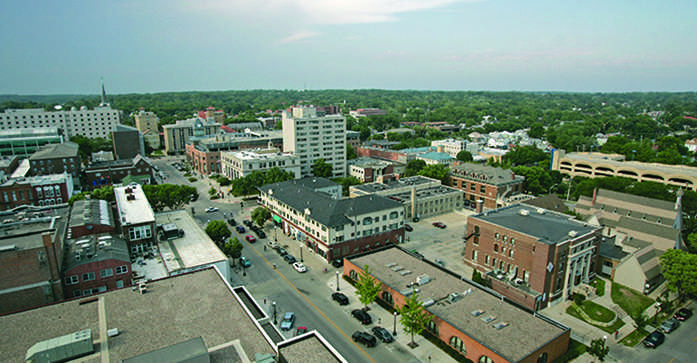Is there enough housing in Iowa to accommodate the workforce? Not according to the state government.
The Iowa Finance Authority, a state agency that commonly hosts programs to further community development and housing, announced Oct. 9 the beginning of a new program to make housing more accessible for communities with a large workforce.
The new Workforce Housing Loan Program is meant to provide financial assistance to cities that are experiencing economic growth faster than housing and urban development growth. There will be $5 million allotted in low-cost, repayable loans.
As opposed to loaning money to individuals looking for housing, however, the loans will go directly to cities or counties. The cities will then be responsible for where that money goes to increase housing.
“The program requires that rental unites be established and serve households of less than 140 percent of statewide median income,” said Carolann Jensen, the chief programs officer of the Iowa Finance Authority. “If the city or county wants to loan, grant, or provide both to a project, that is up to them.”
Jensen said the loans themselves are low interest, set at only 1 percent interest per year. The maximum borrowing term will be 20 years. To be eligible, each city or county must follow a set of criteria just to apply.
The region must have a low average rental vacancy of 5 percent or less, a low unemployment rate, and it must demonstrate the increased demand for workforce housing. Cities with populations of under 50,000 will also be prioritized because of their more limited tax base and resources.
“The applications will be scored based upon established criteria,” Jensen said. “The ideal project would be in a city that has experienced a rapid increase in jobs and needs the housing to sustain the economic growth.”
In a press release, Gov. Terry Branstad said the state’s economic growth required the increase in housing.
“Jobs are moving into communities all throughout our state,” Branstad said in the release. “These jobs are both attracting current Iowans to move within the state, as well giving us the opportunity to welcome new Iowans. This employment growth is in turn creating the need for additional workforce housing, and this program will allow communities to increase available housing stock to meet that demand.”
Jensen said the possibility of a city or county failing to repay the loan would be to their own detriment.
“If a city or county fails to repay the loan, the default could impact their financial standing,” she said. “The consequence would also impact their ability to issue bonds or borrow money from any entity.”
Additionally, the housing loan cannot exceed more than half of the total development’s cost for each community and also cannot exceed $50,000 per assisted workforce housing rental unit.
Agatha Gutierrez, public affairs specialist for Region 7 of the U.S. Department of Housing and Urban Development, said similar programs can be found in other states, though sometimes funded by federal dollars.
“Various HUD programs provide flexibility to communities to use federal funds in ways that respond to specific housing needs and local priorities,” Gutierrez said.
City and county applications for the loans are due by Nov. 2. Applicants will also have to provide a rental housing market analysis conducted by an independent third party, although the recent announcement and upcoming application date may make this difficult for smaller towns with fewer resources.







